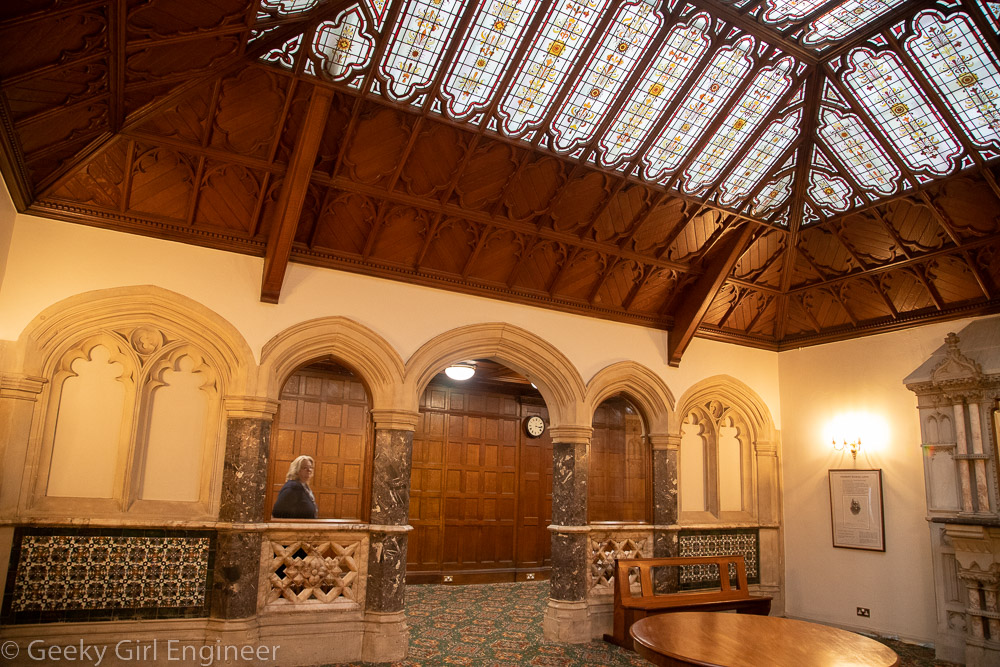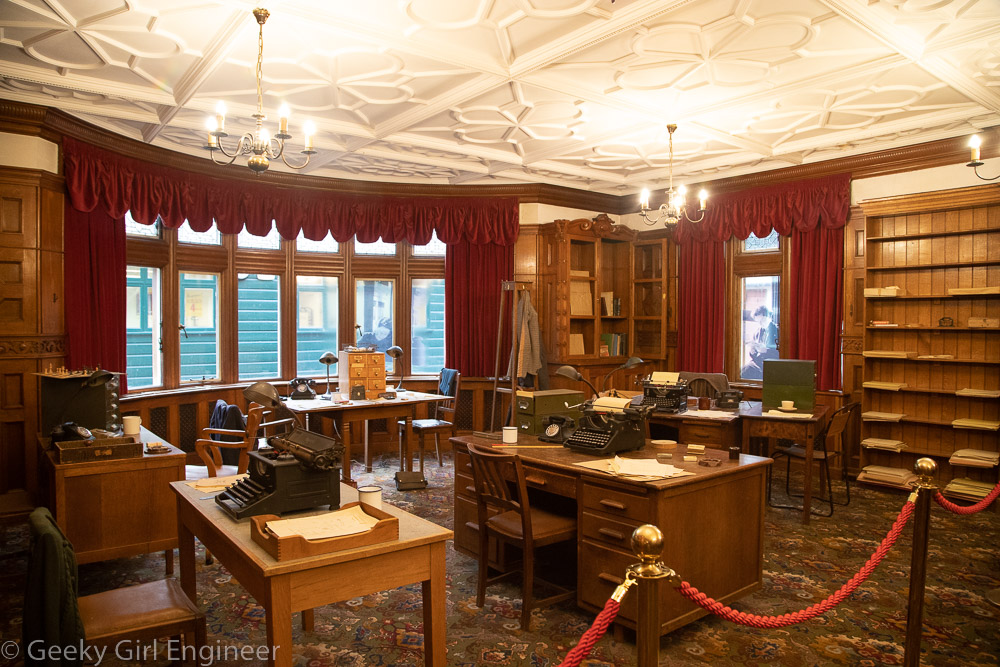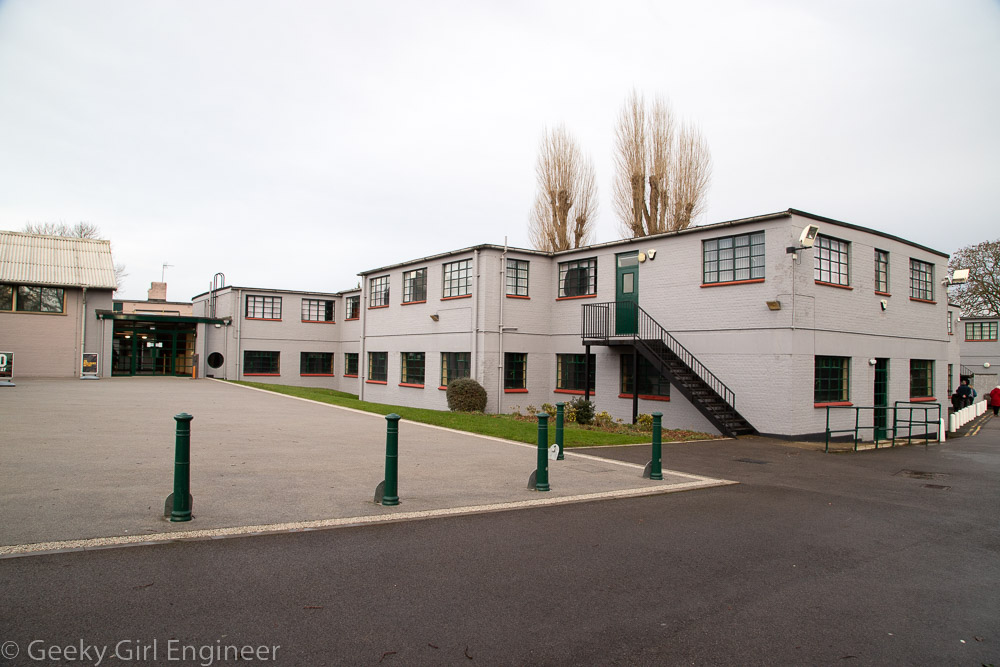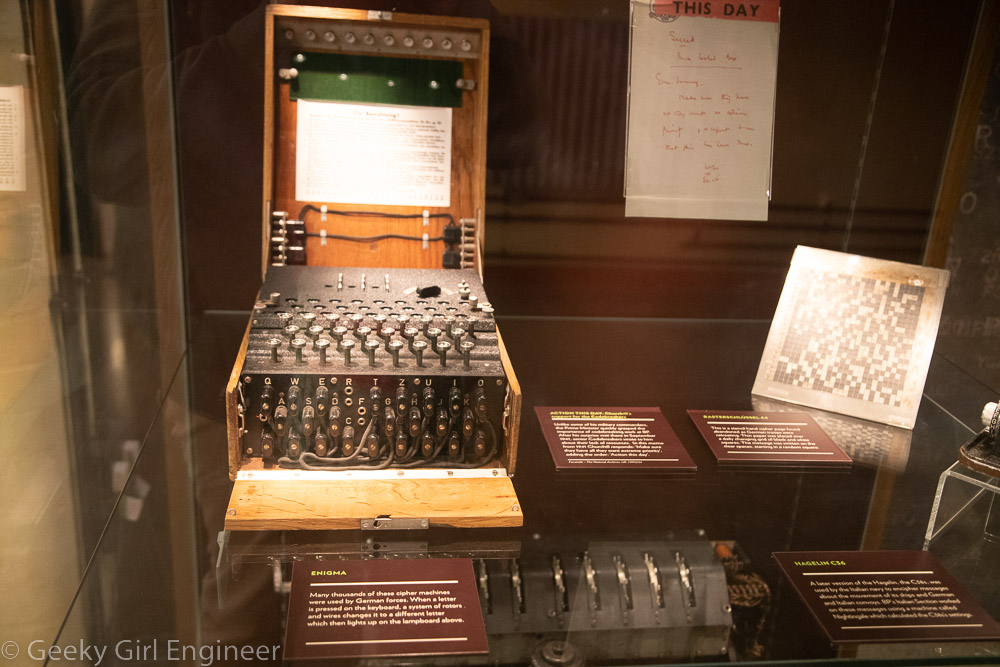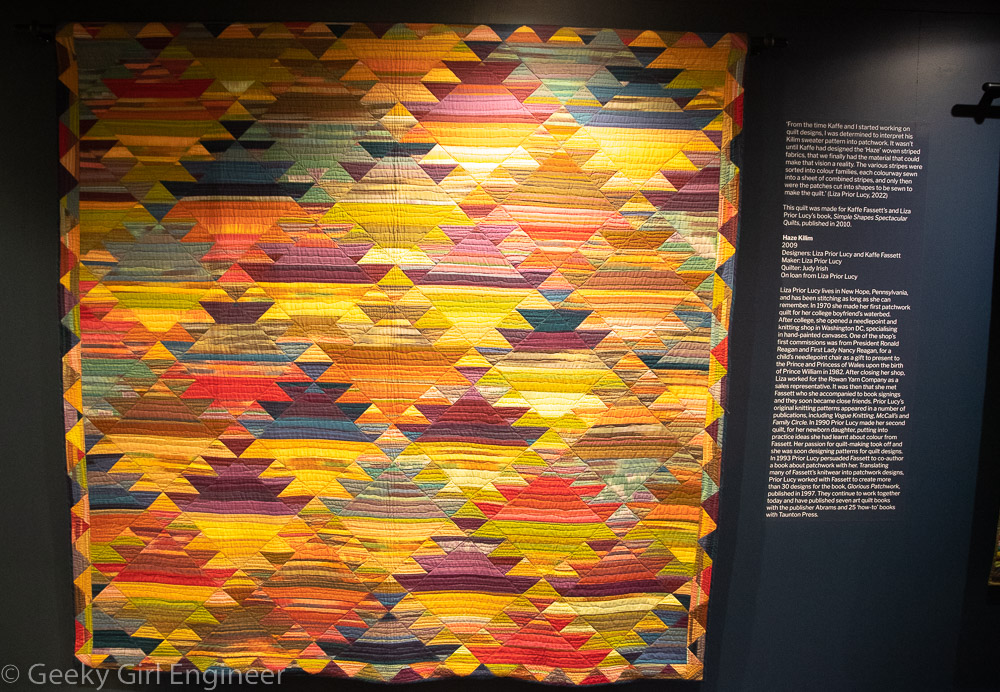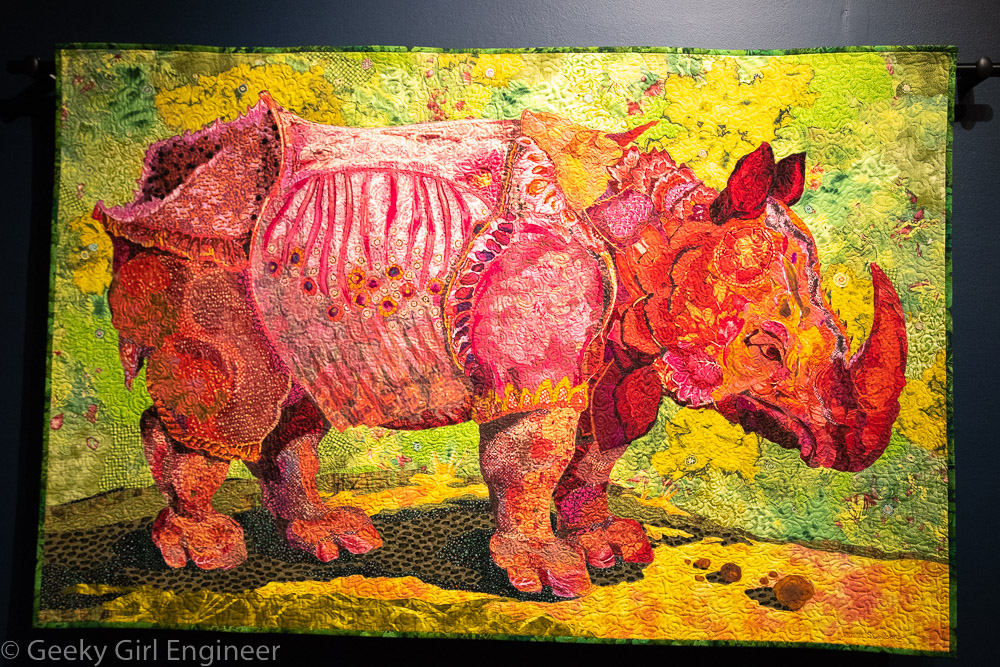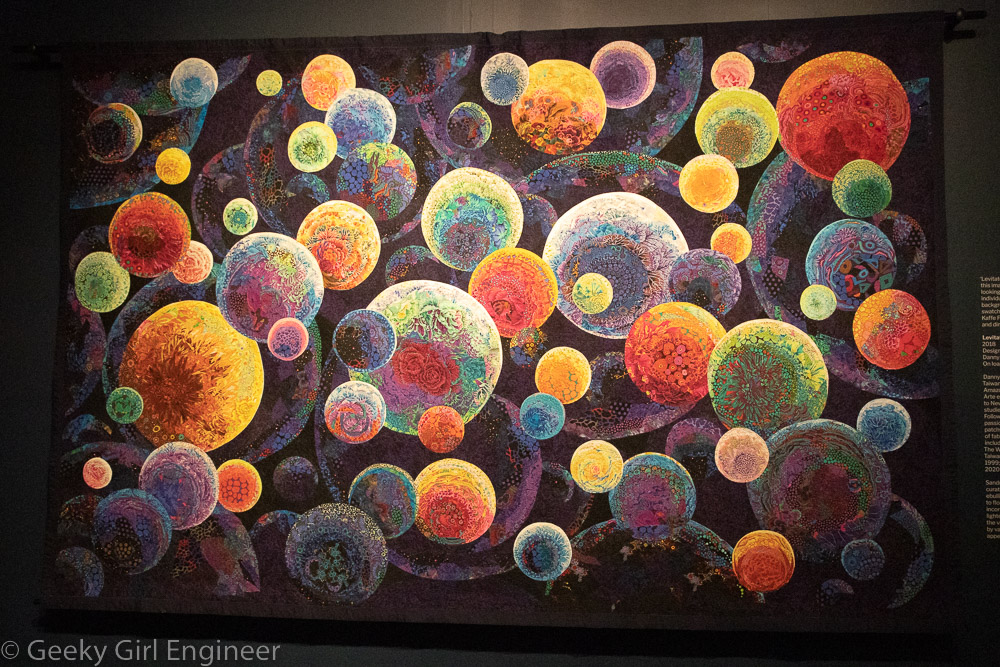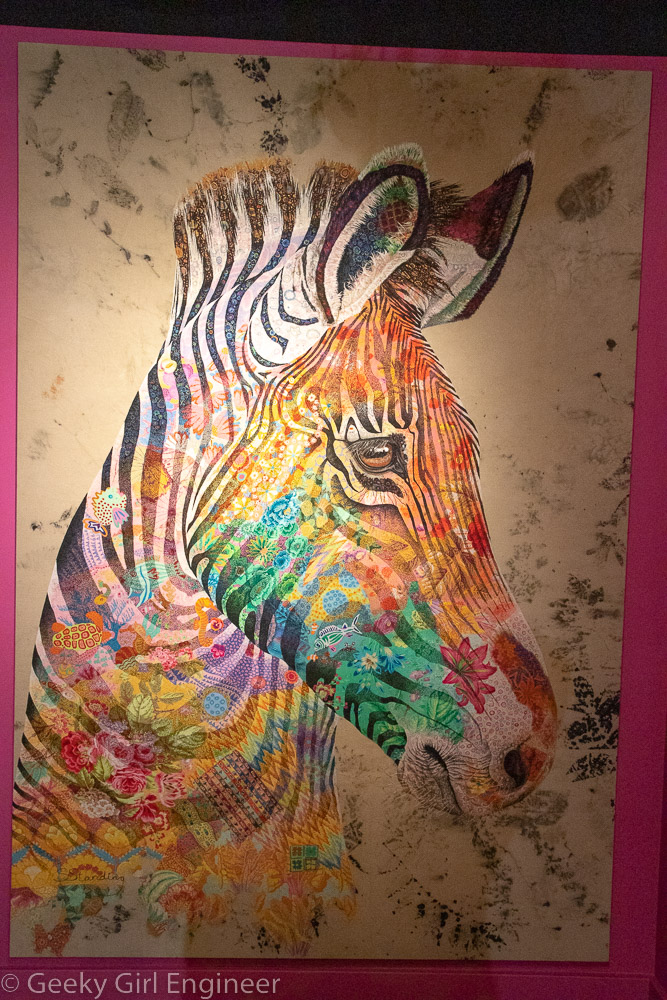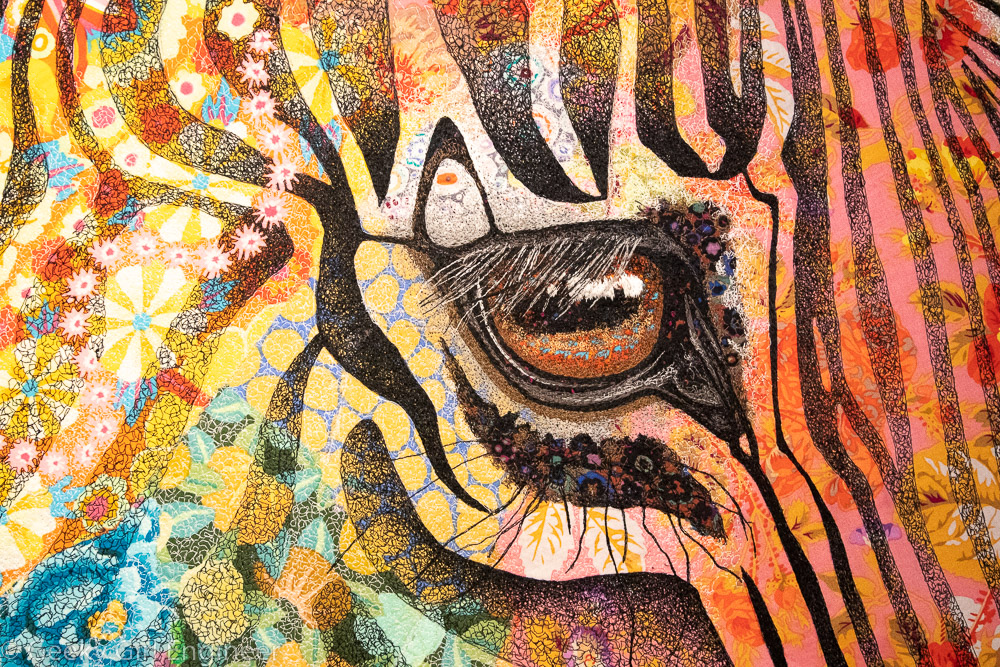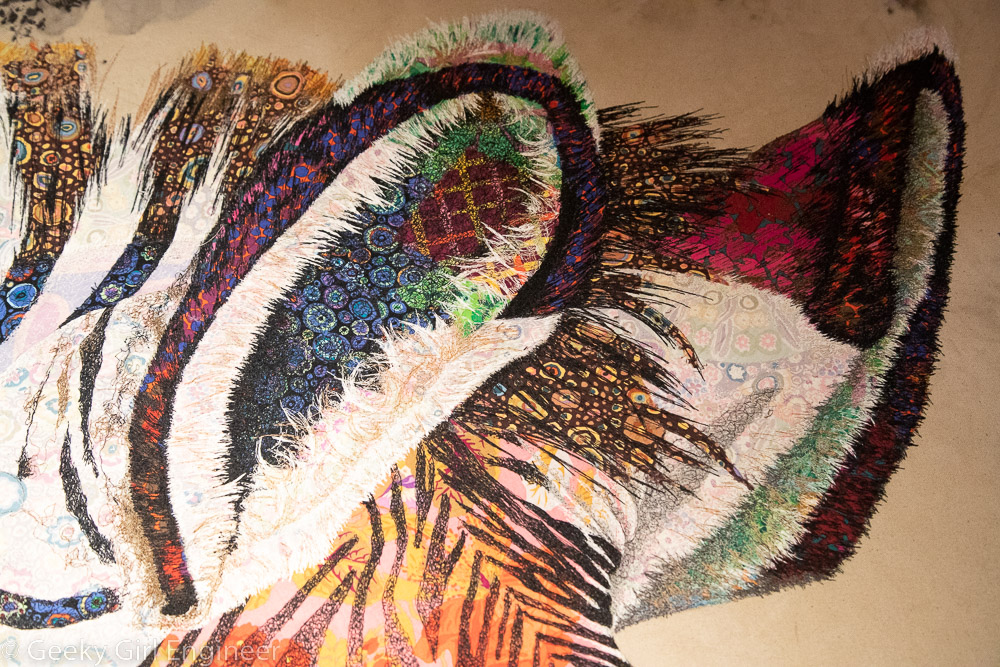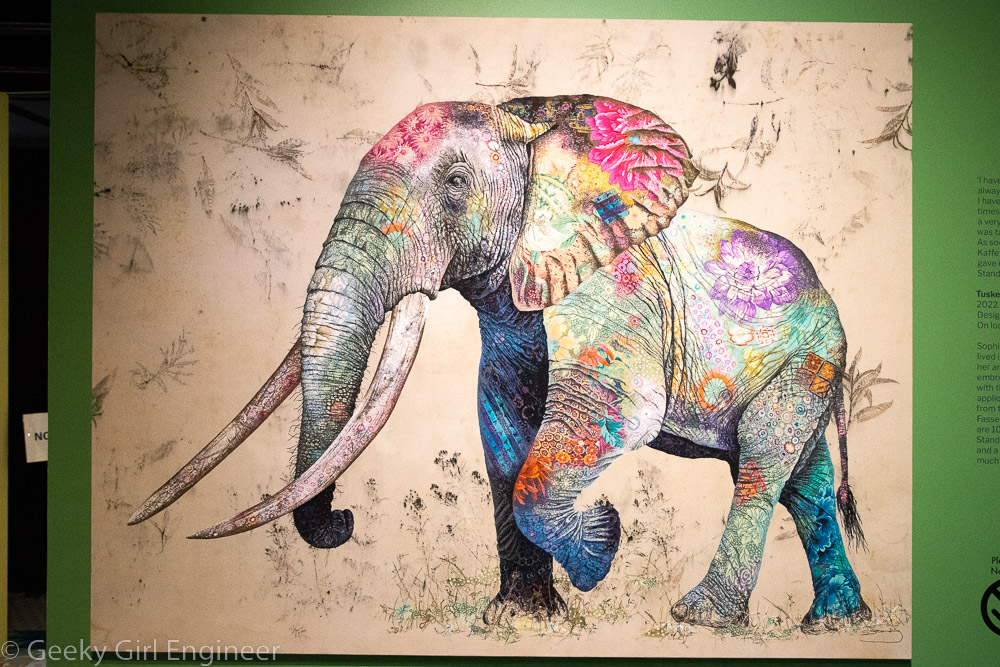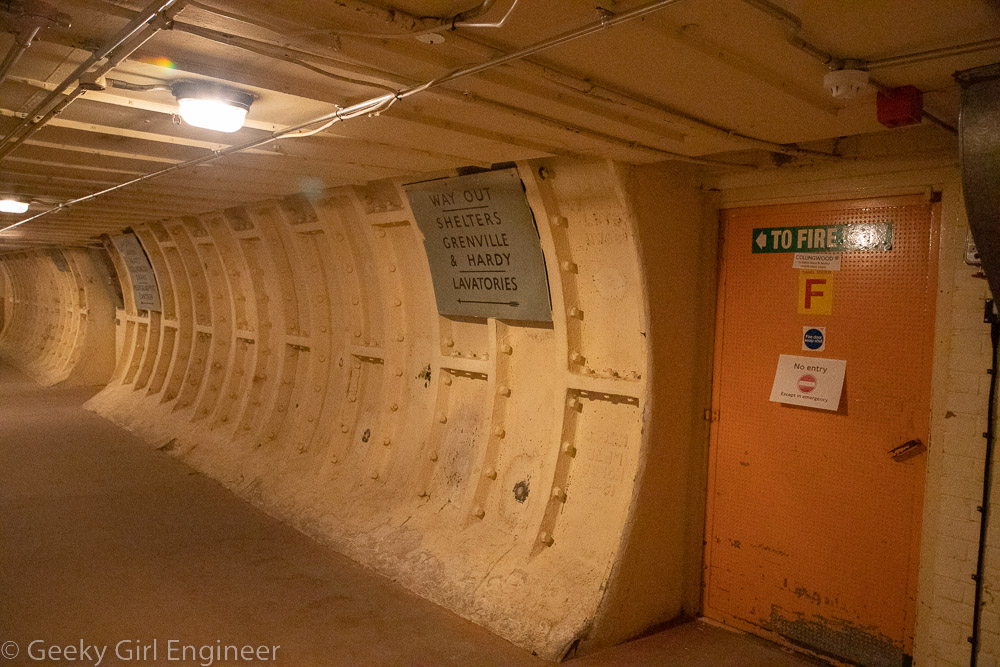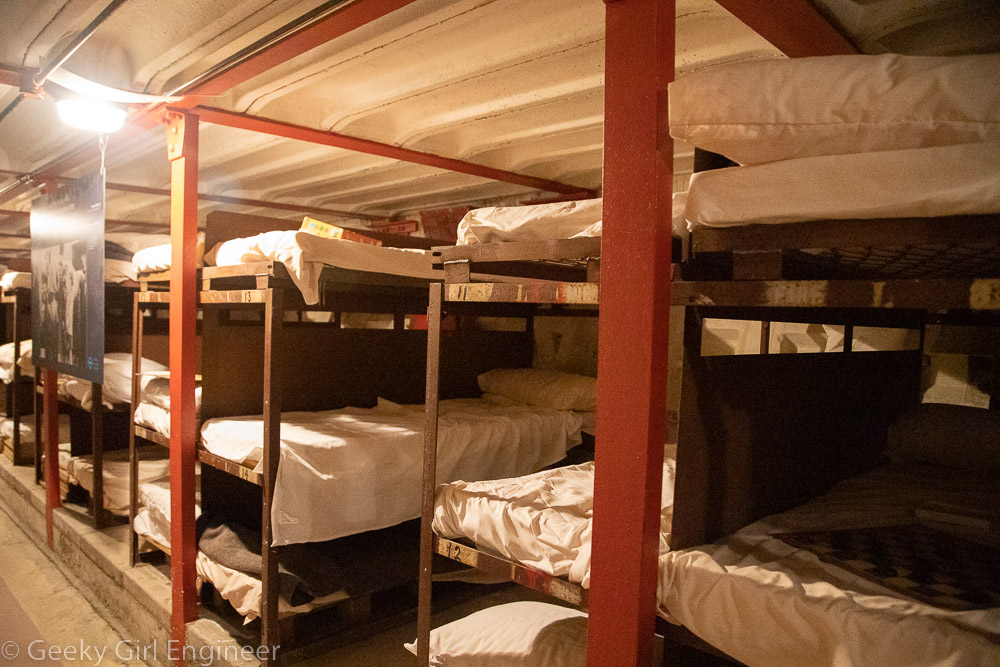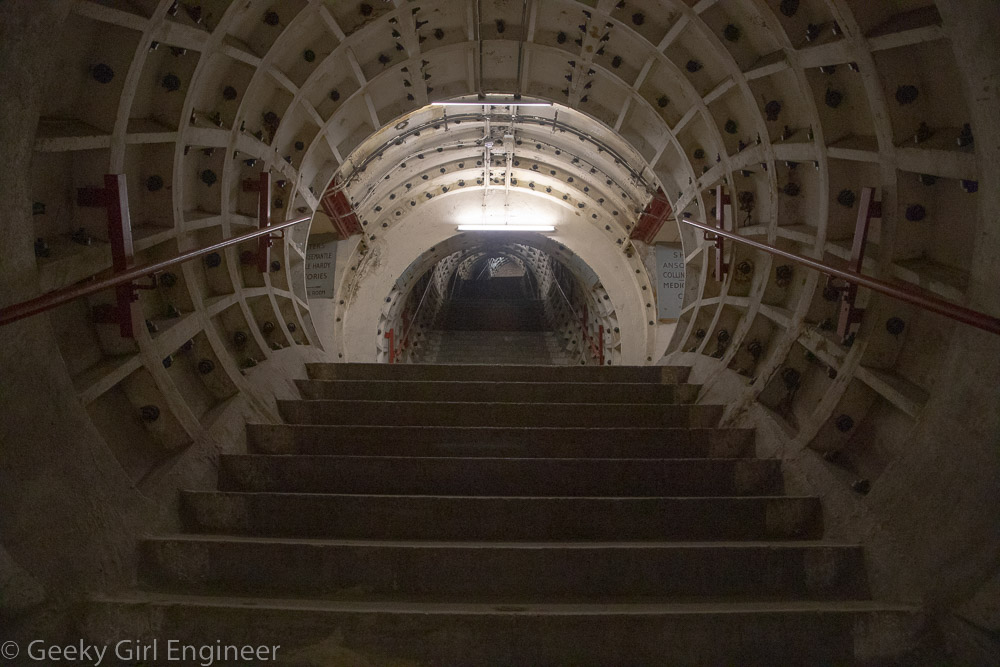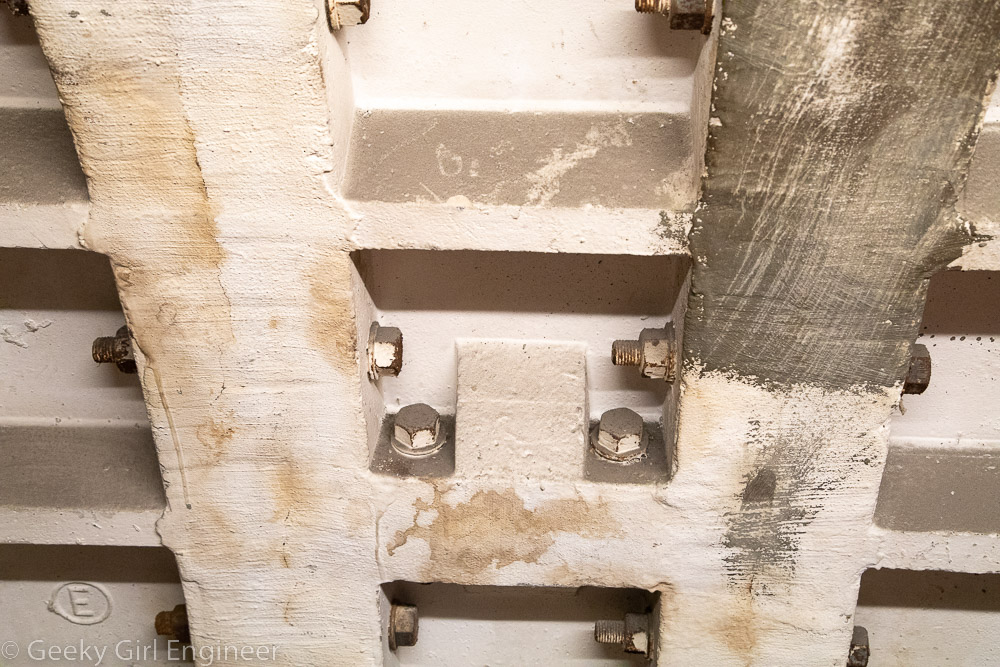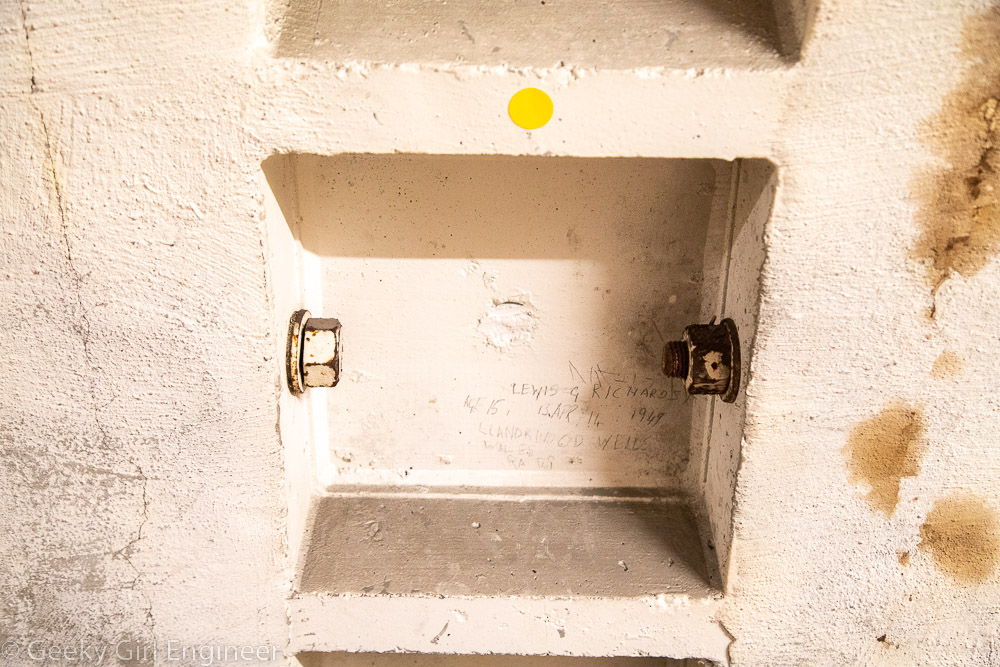As I am in London, I took a short train to Bletchley Park to see where the British codebreakers worked during World War II. I had read about this place before, so it was neat to see it in person. You can tour the mansion where they originally worker as well as most of the other buildings that were added on later. They also have exhibits explaining how they decrypted codes and machines that were built to aid in decryption. To be honest, even though I understand the basics of decryption, I still had trouble following much of what was explained. However, it was still interesting to see. Also the mansion is beautiful, and the newer buildings are pretty much what you would expect of a WWII government building.
While walking to the mansion, there was a fenced off area where there was a hole, so of course, I had to investigate. I’m walking around this historic site reading about cryptography, and I, being me, have to go investigate any hole in the ground, especially when pipes are involved.


